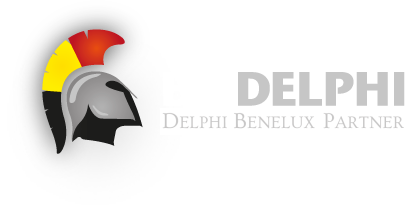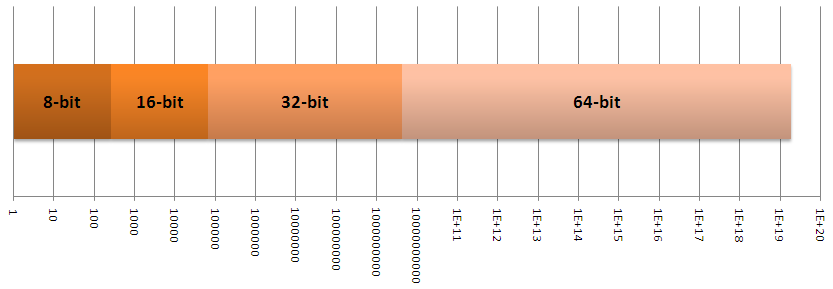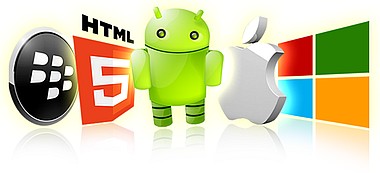The mORMot framework documentation, in its HTML online form, has been enhanced to include links to almost of the code symbols. In fact, the latest version of our SynProject tool will search for code symbols (types, methods, constants, functions): Everywhere in the API Reference pages; In the text […]
Open Source › mORMot Framework
2015-03-01
ShowCase: mORMot with FPC on Android
2015-03-01. Open Source › mORMot Framework
I just received a mail from Alfred (aka Alf in the source code), which did a lot of work to let our little mORMot compiles and run with FPC, especially under Linux, and also with an ARM processor. Hello Arnaud, A nice surprise ... Sample 2 native on Android !!!! See picture. Works 100% !!! […]
2015-02-01
Benchmarking QDAC3 JSON parser
2015-02-01. Open Source › mORMot Framework
Do you know QDAC3 ?
This is an open source project, from China (with Chinese comments and exception
errors messages, but the methods and variables are in English).
It is cross-platform, and told to be very fast about JSON process.

You can download this Open Source project code from http://sourceforge.net/projects/qdac3
And their blog - in Chinese - is at http://blog.qdac.cc/
So I included QDAC3 in
our "25 - JSON performance" sample.
Numbers are talking, now.
2015-01-10
mORMot under Linux thanks to FPC
2015-01-10. Open Source › mORMot Framework
You can use the FreePascal Compiler (FPC) to compile the mORMot framework source code, targetting Windows and Linux.

Linux is a premium target for cheap and efficient server Hosting. Since mORMot has no dependency, installing a new mORMot server is as easy as copying its executable on a blank Linux host, then run it. No need to install any framework nor runtime. You could even use diverse operating systems (several Linux or Windows Server versions) in your mORMot servers farm, with minimal system requirements, and updates.
We will now see how to write your software with Linux-compiling in mind, and also give some notes about how to install a Linux Virtual Machine with Lazarus on your Windows computer, compiling both FPC and Lazarus from their SVN latest sources!
2014-12-31
2015: the future of mORMot is BigData
2014-12-31. Open Source › mORMot Framework
How would be 2015 like for our little rodents?
Due to popular request of several users of mORMot, we identified and
designed some feature requests dedicated to BigData process.

In fact, your data is the new value, especially if you propose
SaaS (Software As A Service)
hosting to your customers, with a farm of mORMot
servers.
Recent Linux support for mORMot servers, together with the
high performance and installation ease of our executable, open the gate to
cheap cloud-based hosting.
As a consequence, a lot of information would certainly be gathered by
your mORMot servers, and a single monolithic database
is not an option any more.
For mORMot solutions hosted in cloud, a lot of data may be generated. The default SQLite3 storage engine may be less convenient, once it reaches some GB of file content. Backup becomes to be slow and inefficient, and hosting this oldest data in the main DB, probably stored on an expensive SSD, may be a lost of resource. Vertical scaling is limited by hardware and price factors.
This is were data sharding comes into scene.
Note that sharding is not replication/backup, nor clustering, nor just
spreading. We are speaking about application-level data splitting, to ease
maintenance and horizontal scalability of mORMot servers.
Data sharding could already be implemented with mORMot servers,
thanks to TSQLRestStorage:
- Using
TSQLRestStorageExternal: any table may have its own external SQL database engine, may be in its separated DB server; - Using
TSQLRestStorageMongoDB: any table may be stored on a MongoDB cluster, with its own sharding abilities; - Using
TSQLRestStorageRemote: each table may have its own remote ORM/REST server.
But when data stored in a single table tends to grow without limit, this
feature is not enough.
Let's see how the close future of mORMot looks like.
2014-11-28
ODM magic: complex queries over NoSQL / MongoDB
2014-11-28. Open Source › mORMot Framework
You know that our mORMot is able to access directly any MongoDB database engine, allowing its ORM to become an ODM, and using NoSQL instead of SQL for the query languages.

But at mORMot level, you could share the same code between your
RDBMS and NoSQL databases.
The ORM/ODM is able to do all the conversions by itself!
Since we have just
improved this feature, it is time to enlighten its current status.
2014-11-20
BeDelphi 2014 Slides
2014-11-20. Open Source › mORMot Framework
We just finished our Be-Delphi 2014 sessions and drank our last beers, so
here we are.
I published some slides for this great event.
2014-11-14
BREAKING CHANGE - TSQLRecord.ID primary key changed to TID: Int64
2014-11-14. Open Source › mORMot Framework
Up to now, the TSQLRecord.ID property was defined in
mORMot.pas as a plain
PtrInt/NativeInt (i.e. Integer under
Win32), since it was type-cast as pointer for TSQLRecord published
properties.
We introduced a new TID type, so that the ORM primary key would
now be defined as Int64.

All the framework ORM process relies on the TSQLRecord
class.
This abstract TSQLRecord class features a lot of built-in methods,
convenient to do most of the ORM process in a generic way, at record level.
It first defines a primary key field, defined as ID:
TID, i.e. as Int64 in mORMot.pas:
type
TID = type Int64;
...
TSQLRecord = class(TObject)
...
property ID: TID read GetID write fID;
...
In fact, our ORM relies now on a Int64 primary key, matching
the SQLite3 ID/RowID primary key.
This primary key will be used as RESTful resource
identifier, for all CRUD operations.
Automatic TSQLRecord memory handling
2014-11-14. Open Source › mORMot Framework
Working with objects is pretty powerful, but requires to handle manually the
created instances life time, via try .. finally
blocks. Most of the time, the TSQLRecord life time would be very
short: we allocate one instance on a local variable, then release it when it
goes out of scope.

If we take again the TSQLBaby sample, we may write:
function NewMaleBaby(Client: TSQLRest; const Name,Address: RawUTF8): TID; var Baby: TSQLBaby; // store a record begin Baby := TSQLBaby.Create; try Baby.Name := Name; Baby.Address := Address; Baby.BirthDate := Date; Baby.Sex := sMale; result := Client.Add(Baby); finally Baby.Free; end; end;
To ease this pretty usual pattern, the framework offers some kind of
automatic memory management at TSQLRecord level:
function NewMaleBaby(Client: TSQLRest; const Name,Address: RawUTF8): TID; var Baby: TSQLBaby; // store a record begin TSQLBaby.AutoFree(Baby); // no try..finally needed! Baby.Name := Name; Baby.Address := Address; Baby.BirthDate := Date; Baby.Sex := sMale; result := Client.Add(Baby); end; // local Baby instance will be released here
2014-11-05
mORMot documentation as web
2014-11-05. Open Source › mORMot Framework
We have enhanced our SynProject Open Source tool, so that it is now able to generate its documentation as HTML, in addition to doc/pdf documents. You can take a look at this web page. It contains the whole SAD 1.18 content. The pdf is more than 16 MB, whereas this html page is only 6MB. Note that […]
2014-10-25
Are "Micro Services" the proper way of writing SOA?
2014-10-25. Open Source › mORMot Framework
I just wanted to share a great article by Martin Fowler, about Micro Services. IMHO such "Micro Services" are the proper way of defining a SOA project, following SOLID principles. If we follow the "Single Responsibility" principle, we will define small uncoupled services, which […]
2014-10-24
MVC/MVVM Web Applications
2014-10-24. Open Source › mORMot Framework
We almost finished implementing a long-standing feature request,
introducing MVC / MVVM for Web Applications (like RubyOnRails) in mORMot.
This is a huge step forward, opening new perspectives not only to our
framework, but for the Delphi community.
In respect to the existing
MVC frameworks for Delphi, our solution is closer to Delphi On Rails (by the
convention-over-configuration
pattern) than the Delphi MVC
Framework or XMM.
The mORMot point of view is unique, and quite powerful,
since it is integrated with other parts of our framework, as its ORM/ODM or interface-based services.
Of course, this is a work in progress, so you are welcome to put your feedback,
patches or new features!

We will now explain how to build a MVC/MVVM web application using
mORMot, starting from the "30
- MVC Server" sample.
First of all,
check the source in our GitHub repository: two .pas files, and
a set of minimalist Mustache
views.
This little web application publishes a simple BLOG, not fully finished yet
(this is a Sample, remember!).
But you can still execute it in your desktop browser, or any mobile device
(thanks to a simple Bootstrap-based responsive design), and see the
articles list, view one article and its comments, view the author information,
log in and out.
This sample is implemented as such:
| MVVM | Source | mORMot |
| Model | MVCModel.pas |
TSQLRestServerDB ORM over a SQlite3 database |
| View | *.html |
Mustache template engine in the Views sub-folder |
| ViewModel | MVCViewModel.pas |
Defined as one IBlogApplication interface |
For the sake of the simplicity, the sample will create some fake data in its own local SQlite3 database, the first time it is executed.
2014-09-12
Legacy code, mORMot, and database sharing
2014-09-12. Open Source › mORMot Framework
It is pretty much possible that you would have to maintain and evolve a legacy project, based on an existing database, with a lot of already written SQL statements - see Legacy code and existing projects.

For instance, you would like to use mORMot for new features, and/or
add mobile or HTML clients - see Cross-Platform
clients.
In this case, the ORM advanced features - like ORM Cache or BATCH process, see
BATCH
sequences for adding/updating/deleting records - may conflict with the
legacy code, for the tables which may have to be shared.
Here are some guidelines when working on such a project.
To be exhaustive about your question, we need to consider each ORM CRUD
operation.
We may have to divide them in three kinds: read queries, insertions, and
modifications of existing data.
2014-08-20
List your app on mORMot ShowCase
2014-08-20. Open Source › mORMot Framework
If you use our little mORMot framework in any of your project,
commercial or not, please report it to a new
forum thread dedicated for this!
Sounds like if more and more projects are using our little rodent...
The cross-platform clients did increase its popularity, as far as I found out,
in the last days.

Furthermore, if you accept that your application is quoted in our framework documentation and web site, and/or your logo displayed, please notify it in the application post or by email to us.
The first listed application - EasyMail7 Client-Server Email Marketing Solution - is indeed impressive, and shows well the Client-Server and storage abilities of the framework.
2014-08-16
Will WebSocket replace HTTP? Does it scale?
2014-08-16. Open Source › mORMot Framework
You certainly noticed that WebSocket is the current
trendy flavor for any modern web framework.
But does it scale? Would it replace HTTP/REST?
There is a feature
request ticket about them for mORMot, so here are some thoughts -
matter of debate, of course!
I started all this by answering a StackOverflow
question, in which the actual answers were not accurate enough, to my
opinion.
From my point of view, Websocket - as a protocol - is some kind of monster.

You start a HTTP stateless connection, then switch to WebSocket
mode which releases the TCP/IP dual-direction layer, then you may switch later
on back to HTTP...
It reminds me some kind of monstrosity, just like encapsulating everything over
HTTP, using XML messages... Just to bypass the security barriers... Just
breaking the OSI layered
model...
It reminds me the fact that our mobile phone data providers do not use
broadcasting for streaming audio and video, but regular Internet HTTP servers,
so the mobile phone data bandwidth is just wasted when a sport event occurs:
every single smart phone has its own connection to the server, and the same
video is transmitted in parallel, saturating the single communication
channel... Smart phones are not so smart, aren't they?
WebSocket sounds like a clever way to circumvent a
limitation...
But why not use a dedicated layer?
I hope HTTP 2.0 would allow
pushing information from the server, as part of the standard... and in one
decade, we probably will see WebSocket as a deprecated
technology.
You have been warned. Do not invest too much in WebSockets..
OK. Back to our existential questions...
First of all, does the WebSocket protocol scale?
Today, any modern single server is able to server millions of clients at
once.
Its HTTP server software has just to be is Event-Driven (IOCP)
oriented (we are not in the old Apache's one connection = one
thread/process equation any more).
Even the HTTP server built in Windows (http.sys - which is used in
mORMot) is IOCP oriented and very efficient (running in kernel
mode).
From this point of view, there won't be a lot of difference at scaling between
WebSocket and a regular HTTP connection. One TCP/IP connection
uses a little resource (much less than a thread), and modern OS are optimized
for handling a lot of concurrent connections: WebSocket and HTTP
are just OSI 7 application layer protocols, inheriting from this TCP/IP
specifications.
But, from experiment, I've seen two main problems with WebSocket:
- It does not support CDN;
- It has potential security issues.
2014-08-15
Background Backup of a SQLite3 Database
2014-08-15. Open Source › mORMot Framework
The primary purpose of any software Backup is to recover data after
its loss, be it by data deletion or corruption.
Data loss can be a common experience of computer users. A 2008 survey found
that 66% of respondents had lost files on their home PC, as Wikipedia quotes.

As a consequence, for any professional use of data, like in our mORMot server, a backup policy is mandatory.
We just introduced officially the SQLite3 Backup API to our low-level
SynSQLite3.pas unit, and wrote dedicated methods to make
background backup of a running mORMot server easy and safe, without
any noticeable performance penalty.
2014-08-11
Cross-Platform mORMot Clients - Smart Mobile Studio
2014-08-11. Open Source › mORMot Framework

Current version of the main framework units target only Win32 and Win64 systems.
It allows to make easy self-hosting of mORMot servers for local
business applications in any corporation, or pay cheap hosting in the Cloud,
since mORMot CPU and RAM expectations are much lower than a regular
IIS-WCF-MSSQL-.Net stack.
But in a Service-Oriented Architecture (SOA), you would probably need
to create clients for platforms outside the Windows world, especially
mobile devices.

A set of cross-platform client units is therefore available in the
CrossPlatform sub-folder of the source code repository. It allows
writing any client in modern object pascal language, for:
- Any version of Delphi, on any platform (Mac OSX, or any mobile supported devices);
- FreePascal Compiler 2.7.1;
- Smart Mobile Studio 2.1, to create AJAX or mobile applications (via PhoneGap, if needed).
This series of articles will introduce you to mORMot's Cross-Platform abilities:
- Units and platforms;
- Generating the client code wrappers;
- Delphi / FreePascal clients;
- Smart Mobile Studio clients.
Any feedback is welcome in our forum, as usual!
Cross-Platform mORMot Clients - Delphi / FreePascal
2014-08-11. Open Source › mORMot Framework

Current version of the main framework units target only Win32 and Win64 systems.
It allows to make easy self-hosting of mORMot servers for local
business applications in any corporation, or pay cheap hosting in the Cloud,
since mORMot CPU and RAM expectations are much lower than a regular
IIS-WCF-MSSQL-.Net stack.
But in a Service-Oriented Architecture (SOA), you would probably need
to create clients for platforms outside the Windows world, especially
mobile devices.

A set of cross-platform client units is therefore available in the
CrossPlatform sub-folder of the source code repository. It allows
writing any client in modern object pascal language, for:
- Any version of Delphi, on any platform (Mac OSX, or any mobile supported devices);
- FreePascal Compiler 2.7.1;
- Smart Mobile Studio 2.1, to create AJAX or mobile applications (via PhoneGap, if needed).
This series of articles will introduce you to mORMot's Cross-Platform abilities:
- Units and platforms;
- Generating the client code wrappers;
- Delphi / FreePascal clients;
- Smart Mobile Studio clients.
Any feedback is welcome in our forum, as usual!
Cross-Platform mORMot Clients - Generating Code Wrappers
2014-08-11. Open Source › mORMot Framework

Current version of the main framework units target only Win32 and Win64 systems.
It allows to make easy self-hosting of mORMot servers for local
business applications in any corporation, or pay cheap hosting in the Cloud,
since mORMot CPU and RAM expectations are much lower than a regular
IIS-WCF-MSSQL-.Net stack.
But in a Service-Oriented Architecture (SOA), you would probably need
to create clients for platforms outside the Windows world, especially
mobile devices.

A set of cross-platform client units is therefore available in the
CrossPlatform sub-folder of the source code repository. It allows
writing any client in modern object pascal language, for:
- Any version of Delphi, on any platform (Mac OSX, or any mobile supported devices);
- FreePascal Compiler 2.7.1;
- Smart Mobile Studio 2.1, to create AJAX or mobile applications (via PhoneGap, if needed).
This series of articles will introduce you to mORMot's Cross-Platform abilities:
- Units and platforms;
- Generating the client code wrappers;
- Delphi / FreePascal clients;
- Smart Mobile Studio clients.
Any feedback is welcome in our forum, as usual!
Cross-Platform mORMot Clients - Units and Platforms
2014-08-11. Open Source › mORMot Framework

Current version of the main framework units target only Win32 and Win64 systems.
It allows to make easy self-hosting of mORMot servers for local
business applications in any corporation, or pay cheap hosting in the Cloud,
since mORMot CPU and RAM expectations are much lower than a regular
IIS-WCF-MSSQL-.Net stack.
But in a Service-Oriented Architecture (SOA), you would probably need
to create clients for platforms outside the Windows world, especially
mobile devices.

A set of cross-platform client units is therefore available in the
CrossPlatform sub-folder of the source code repository. It allows
writing any client in modern object pascal language, for:
- Any version of Delphi, on any platform (Mac OSX, or any mobile supported devices);
- FreePascal Compiler 2.7.1;
- Smart Mobile Studio 2.1, to create AJAX or mobile applications (via PhoneGap, if needed).
This series of articles will introduce you to mORMot's Cross-Platform abilities:
- Units and platforms;
- Generating the client code wrappers;
- Delphi / FreePascal clients;
- Smart Mobile Studio clients.
Any feedback is welcome in our forum, as usual!
« previous entries - page 5 of 13 - next entries »

